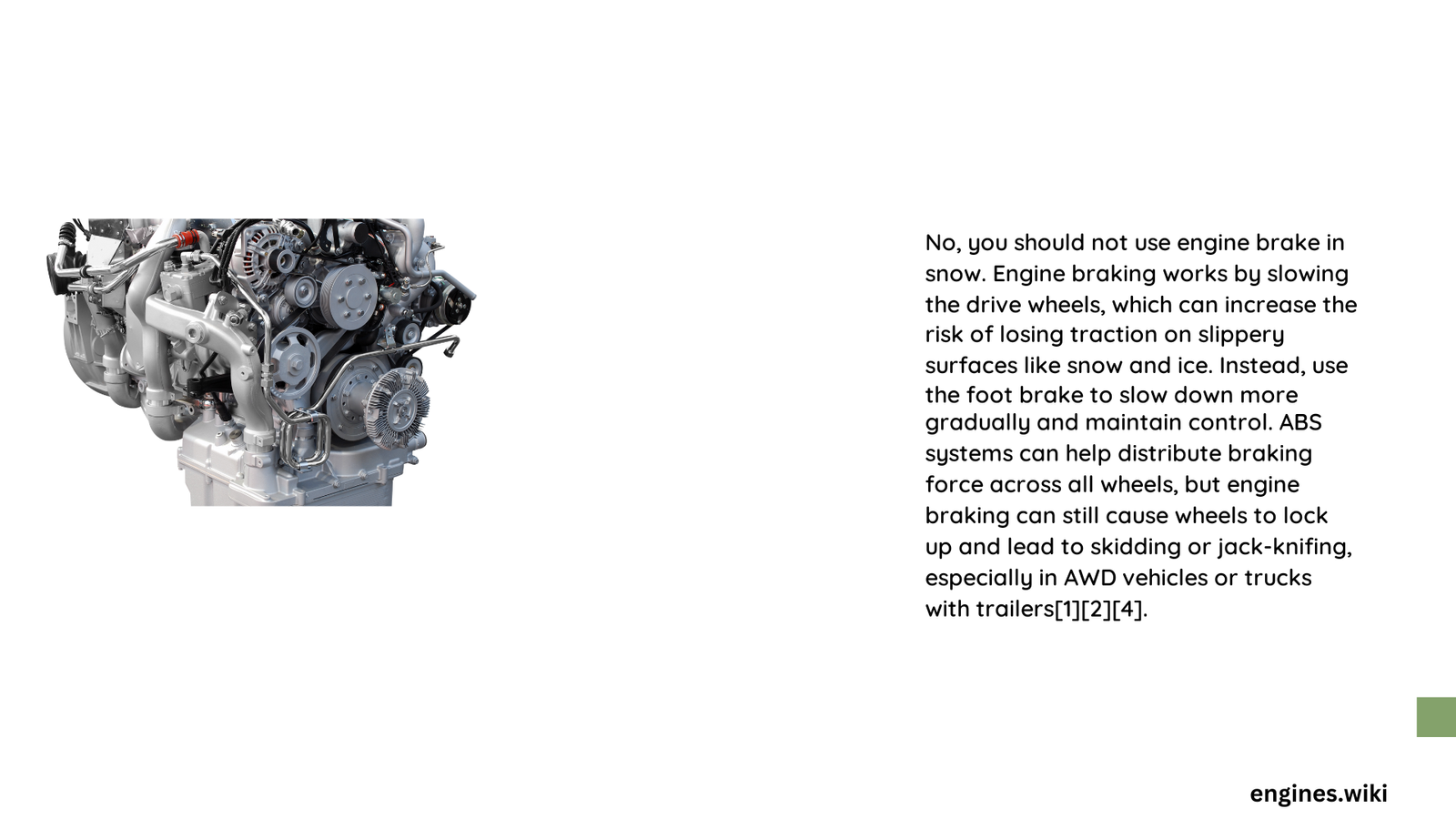Navigating snowy roads demands precise driving techniques, and engine braking presents a complex strategy with potential risks and benefits. Drivers must carefully evaluate their vehicle’s capabilities, road conditions, and personal skill level before implementing engine braking. Understanding the nuanced approach to slowing down in winter conditions can mean the difference between safe passage and potential vehicular mishap.
What Makes Engine Braking Unique in Snowy Conditions?
Engine braking represents a method of vehicle deceleration that uses the engine’s resistance to slow down, rather than relying exclusively on traditional brake systems. In snowy environments, this technique requires exceptional skill and understanding.
Can Engine Braking Compromise Vehicle Stability?
| Stability Factor | Risk Level | Mitigation Strategy |
|---|---|---|
| Rear Axle Traction | High | Gentle gear transitions |
| Wheel Spin | Moderate | Careful RPM management |
| Control Loss | High | Anticipatory driving |
Engine braking can potentially destabilize vehicles on slippery surfaces by:
- Causing unexpected rear axle weight distribution
- Reducing overall wheel traction
- Creating unpredictable vehicle movement
What Are the Primary Safety Considerations?
Critical safety factors include:
- Traction Management
- Avoid aggressive downshifting
- Maintain consistent wheel rotation
-
Select appropriate gear ratios
-
Control Techniques
- Use smooth, gradual deceleration
- Minimize sudden throttle changes
- Anticipate road conditions
How Does Vehicle Type Impact Engine Braking?
Different transmission types significantly influence engine braking effectiveness:
- Manual Transmissions
- Offer precise gear control
- Allow direct engine resistance manipulation
-
Provide more predictable deceleration
-
Automatic Transmissions
- Limited manual intervention
- Less direct control over gear selection
- Require advanced driving techniques
What Performance Metrics Should Drivers Consider?
Performance evaluation involves analyzing:
- Stopping distance variations
- Wheel traction maintenance
- Vehicle stability during deceleration
When Should You Avoid Engine Braking?
Drivers must refrain from engine braking when:
- Road surfaces are extremely icy
- Vehicle lacks proper traction control
- Steep downhill gradients are present
- Visibility is severely compromised
Pro Tips for Safe Snow Driving
Expert recommendations include:
- Maintain lower speeds
- Increase following distance
- Practice controlled braking techniques
- Understand your vehicle’s specific characteristics
Technical Insights

Professional drivers recommend:
– Using third or second gear for controlled descent
– Avoiding high RPM ranges
– Implementing smooth transition techniques
What Emergency Techniques Complement Engine Braking?
Emergency strategies include:
– Pumping brakes gently
– Steering into potential skids
– Maintaining calm, controlled movements
Final Recommendations
While engine braking can be effective, it requires:
– Advanced driving skills
– Comprehensive understanding of vehicle dynamics
– Constant situational awareness
References:
1. RAC Drive – Engine Braking Guide
2. Winter Driving Safety Association
3. Automotive Performance Institute
